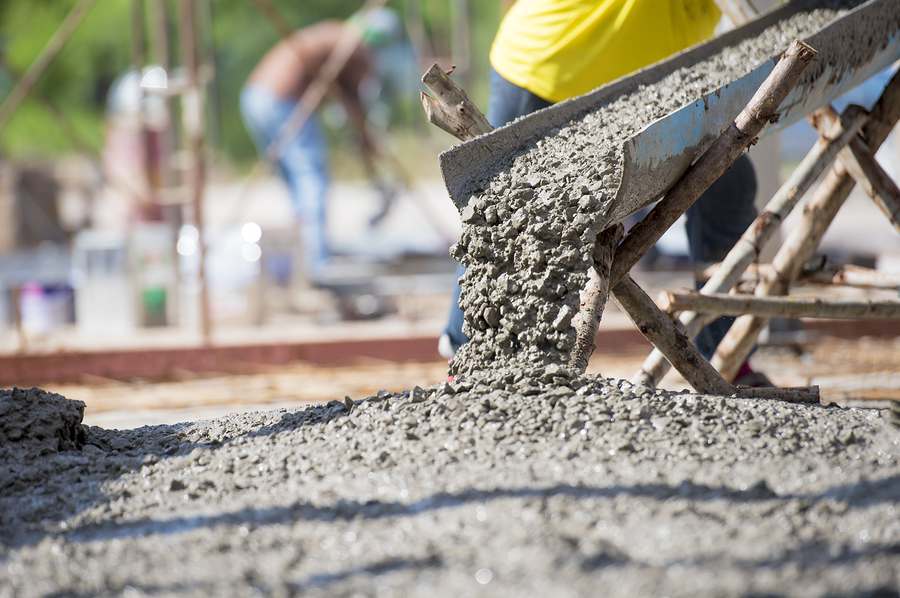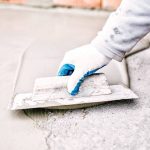Concrete is the most versatile man made material of our times. As a material, its use today in the world is second only to water. This is because of its mouldability when fresh and its strength and durability characteristic when set. Concrete technology has made tremendous strides in past decade. Concrete is now no longer a material consisting of cement, aggregates, water and admixtures but it is an engineered material with several new constituents. The concrete today can take care of any specific requirements under most of different exposure conditions. In today’s construction practices, many extra properties are demanded of the concrete in terms of speed of construction, workability characteristics, early strength gain, excellent durability, resistance to aggressive media and a long service life. In this context, it is natural that High Performance Concrete (HPC) will soon gain a mainstream appeal, especially in fast developing nations like India.
High Performance Concrete (HPC)
There are no unified definitions for High Performance Concretes (HPC) and different Institutions and experts define High Performance Concrete differently. The American Concrete Institute defines High Performance Concrete as “Concrete that meets special performance and uniformity requirements that cannot always be obtained by using conventional ingredients, normal mixing procedure and typical curing practices.”
In simpler words, HPC is a concrete that has atleast one outstanding property viz. Compressive Strength, High Workability, Enhanced Resistances to Chemical or Mechanical Stresses, Lower Permeability, Durability etc. as compared to normal concrete. For example, Self- compacting Concrete is a specific part of High Performance Concrete, which distinguishes itself with self-consolidation properties coupled with high flowability. Table 1 shows the Properties and Areas of application of High Performance Concretes. Table 1a shows some properties and areas of Application of HPCs.
| Table1: Properties and Areas of Application of HPC | ||
| Property | Types of Concrete | Areas of Application |
| Compressive Strength | High Strength Concrete | Construction Elements in High Rise Buildings |
| Workability | Self Compacting Concrete | Precast Industry Filigree Construction Elements |
| Durability | High Resistance Concrete Chemical-Mechanical | Natural Draught Cooling Tower Tank Bund Areas |
| Density | High Density Concrete with low Permeability | Marine Structures |
| Table 1a: Properties and Areas of Application of HPC | |
| Properties of HPC | Areas of Application of HPC |
| Increase of Durability by lowering of PermeabilityIncrease of Concrete DensityIncrease of Compressive StrengthImprovement in ratio of Flexural Strength to Compressive StrengthIncrease of resistance to Corrosion AttackIncrease of Chemical ResistanceImprovement of Abrasion ResistanceReduction of Segregation and BleedingIncreased resistance to Alkali-Silica-Reaction (ASR)Improved sulphate resistance and low chloride ion penetration | Production of High Strength ConcreteProduction of highly Durable ConcreteGuniting and Shotcrete ApplicationsUnderwater ConcretingConcrete in Marine EnvironmentConcrete for Nuclear ProjectsConcretes for Sewage Treatment PlantsConcrete for Underground StructuresHighly Abrasion and Chemical Attack Resistant ConcreteConcrete to take Thermal Stresses |
Most of these concretes will have very low water cement ratios to achieve durability and this would call on New Generation Super Plasticizers. The advantage of New Generation Super Plasticizers over Older types is the performance; wherein New Generation Super Plasticizers are highly effective at water cement ratios as low as 0.2. Further Acrylate family (AP) and Polycarboxylate (PCE) based Super Plasticizers have minimum loss of slump with respect to time and they do not retard the concrete. The process of hydration begins immediately and there is remarkable development in strengths within 6-8 hours as against the old generation retarding Super Plasticizers. New Generation Super Plasticizers have better compatibility as well as they are found suitable for usage in concrete where Microsilica, Flyash, GGBSF, Aluminosilicates, Colloidal Silica, etc. are used.
In addition to High Strength Concrete which has become relatively common, some HPC applications, which is of interest for the Indian market can be classified as:
- Self-compacting Concrete / High workability concrete
- Concretes resistant against acids / aggressive media
- High Performance Waterproof Concretes
Self-compacting Concrete
Self-compacting Concrete (SCC) as the name signifies should be able to compact itself by its self-weight under gravity without any additional vibrations or compaction. SCC should be able to assume complicated formwork shapes without forming cavities and entrapping air. The reinforcement should be effectively covered and the aggregates should be fully soaked in the concrete matrix. In addition, the concrete should be self-leveling and self-defoaming without any external compaction. Figure.1 shows the flow of SCC.
 |
| Figure 1 |
Self-compacting Concrete has the following special advantages:
- Saves costs on machinery, energy and personnel for vibrating the concrete
- Considerably improved finished surfaces (Fairfaced Concrete), less efflorescence
- Saving in initial cost of formwork and more usage
- Marked improvements in durability on account of better compaction
- Extremely suitable for slim and complicated moulds (filigree elements)
- Covers reinforcement effectively
- Better adhesion between cement binder and aggregates
- Reduces demoulding time
- No sound pollution
The economy of SCC is calculated as extra cost incurred for New Generation Super plasticizers and stabilizers minus the cost of formwork, early demoulding time, purchase of vibrating equipments as well as material saving for concrete cosmetics repair. When these costs are considered & coupled with the durability of conc- rete obtained, the gap between the cost of SCC and normal concrete is substantially narrowed down.
Technology for Self-compacting Concrete
The major difficulty faced in development of Self-compacting Concrete (SCC) is on account of contradictory factors that the concrete should be fully flowable but without bleeding or segregation. It is therefore required that the cement and mortar of Self Compacting Concrete should have higher viscosity to ensure flowability while maintaining stability of bigger aggregates. Special PCE based chemical admixtures and specialized mineral admixtures like Microsilica or Aluminosilicates are required in the production of SCC. To meet the concrete performance requirements, the following three types of self-compacting concretes are available. Figure 2 shows the different concepts for production of SCC.
 |
| Figure 2: Concepts of Production of SCC |
Based on these concepts, the general proportioning guideline for SCC is given in Figure 3.
 |
| Figure 3: General Proportioning Guideline for Self-Compacting Concrete |
Acid Resistant Concrete
One of the major applications of HPC is to increase the durability of concrete where acid attacks or aggressive media are anticipated. This can be achieved physically by resorting to very dense aggregate packing. The packing curve is shown in Figures 4 and 5. This is practically possible by selecting a very smooth sieve line from largest aggregate to the smallest grain of Mineral Additives like Microsilica or New Generation Aluminosilicate slurries. Chemically, cement by itself is not acid resistant. The acid resistant binder is formed by combination of cement, microsilica / aluminosilicate and flyash. To control permeability very low w/c ratio has to be adopted. These types of concretes are especially suited for External Structural Elements in Industrial Areas, piles in aggressive soils, etc.
 |
| Figure 4: Ideal Particle-Size Distribution |
So as to provide the essential concrete properties a high-performance PCE (polycarboxylate ether) needs to be incorporated in the mix. By adjusting the particle size distribution on a micro scale, the permeability of the concrete is reduced which minimizes the penetration of aggressive substances. This approach also minimizes amount of cement used in the mix. Permeability reduction is also achieved by addition of the latest generation aluminosilicates or Microsilica. Depending on the degree of dispersion these material particles more or less completely fill the spaces between the cement particles. During hydration, the pozzolanic silica reacts with the free calcium hydroxide to form calcium silicate hydrates. This gives a denser concrete structure.
 |  | |
| Figure 5: Ideal Particle-Size Distribution in Acid Resistant Concrete | Figure 6: Cooling Tower Built using ARC |
General Mix Design for Acid Resistant Concrete is given in Table 2. Figure 6 shows a cooling tower built entirely with Acid Resistant Concrete.
 |
| Table 2 |



Comments are closed